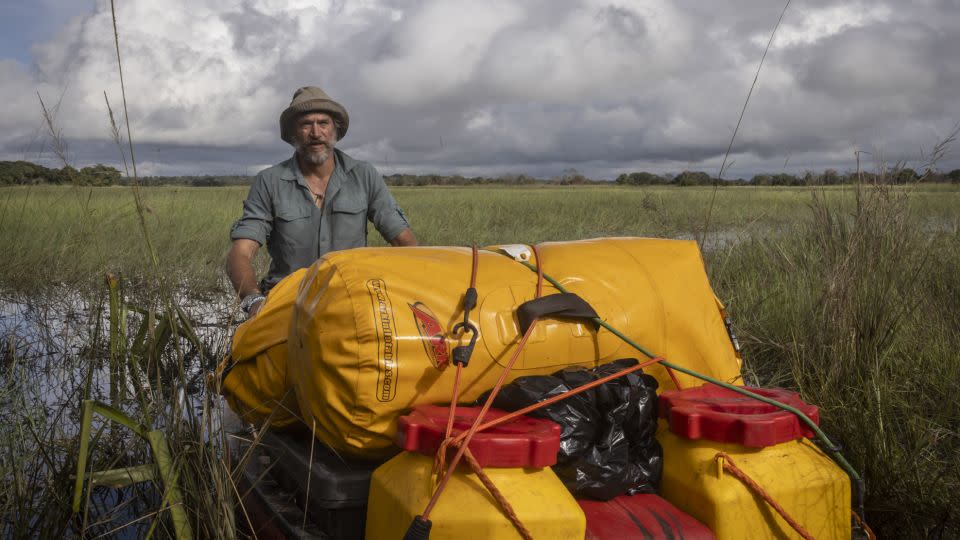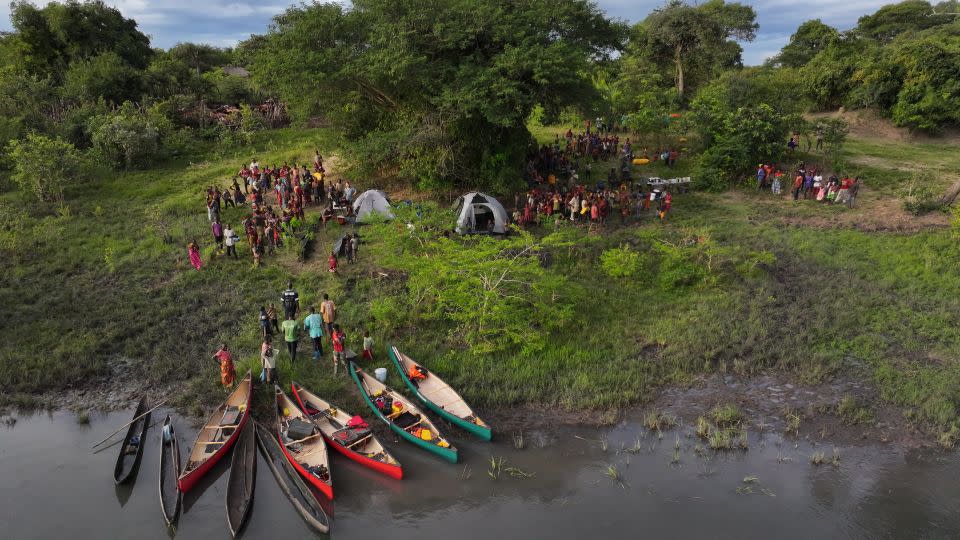Editor’s Note: Call to Earth is a CNN editorial series committed to reporting on the environmental challenges facing our planet, along with the solutions. Rolex Perpetual Planet Initiative partnered with CNN to promote awareness and education around key sustainability issues and to inspire positive action.
The Congo Basin in Central Africa is one of the largest wilderness areas left on Earth, covering 3.4 million square kilometers (1.3 million square miles). It is home to more than 10,000 species of tropical plants and more than 2,000 species of animals – many of which are unique to the region.
As The largest river basin in Africacrosses the borders of several countries and is one of the largest in the world carbon sinksabsorbing carbon from the atmosphere and trapping it.
Despite its importance, a large part of it remains undocumented to science. As temperatures continue to rise globally and weather patterns change, understanding the basin and its ecosystems is crucial for scientists and local communities to preserve these areas and build resilience against climate change.
Steve Boyes, founder and project leader of The Wilderness Project, is gathering scientific information along the Congo River. It is part of the Great Spine of Africa research expeditions, in partnership with the Rolex Perpetual Planet Initiative, which began in the Okavango Delta and will also include research in the Zambezi, Nile, Chad and Niger river basins.
“There is magic, there is mythology, there is power in these rivers,” Boyes told CNN. “It’s the unknown. And this happens in every corner, normally, of these rivers.”

Boyes dedicated his life to exploring the science of Africa’s freshwater systems. His research into Botswana’s Okavango Delta in 2014 helped the river earn UNESCO’s 1,000th world heritage site status and was instrumental in the discovery of more than 140 new species as well as a new source for the delta in the Lands. Highs of Angola.
This expedition is not the first time Boyes has explored the Congo Basin. In 2023, together with a team from the National Geographic Okavango Wilderness Project, he undertook a 39-day canoe trip down the Cassai River, in Angola, covering more than 754 kilometers (469 miles), and demonstrating that the Munhango River is the main source of the Cassai.
In April and May this year, the Great Spine of Africa team worked extensively along the Congo-Zambezi water tower (a term that refers to a forested river basin with high water storage potential) that covers the Chambeshi River , in the northern quarter of Zambia – the furthest source of the Congo. The 33-day journey downriver was the first scientific expedition to attempt to traverse the entire length of the Chambeshi and document its landscape and communities.


Traveling in five canoes, the 10-person team collected data on everything from birds to settlements, boats and bridges to create a comprehensive portrait of Chambeshi’s vast ecosystem. Along with 71 aerial drone surveys, water quality measurements and pathogen samples, they took nighttime recordings of bats and measured water flow to see how the river evolves as it crosses the country.
They also stopped at regular intervals to monitor fish biodiversity and collect samples of environmental DNA (eDNA) released into the water by different organisms.
“eDNA will show us what the aquatic diversity is in the river,” explained Chambeshi expedition lead researcher Matt Dooley.
“In some of these rivers… the diversity is incredible and there aren’t many people in the world who really know all the fish we collect. Therefore, we often find new species or new subspecies of fish. And the Chambeshi River, in particular, is very poorly sampled when it comes to fish diversity.”
The team captured, sampled and photographed around 50 species of fish, which will be sent
for analysis to confirm whether they are new species, or subspecies, not discovered by science.
As soon as an expedition is completed, the data collected is uploaded to the cloud, making it accessible to any researcher who wants to use it. The results are also compiled and distributed to local authorities, NGOs and communities so that they can better understand the nature of the river and where it may benefit from increased protection measures.
“It’s not just about going down and taking pictures and observing and meeting people,” Boyes said. “These are the most detailed riverine, hydrological and ecological baselines ever undertaken anywhere on Earth.
“We’re doing this for future scientists.”
For more news and newsletters from CNN, create an account at CNN.com

















